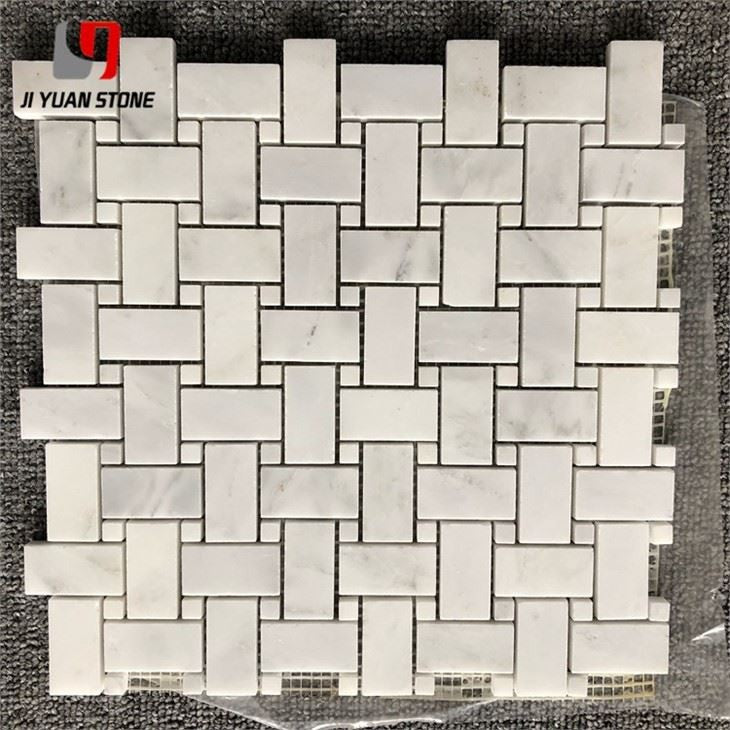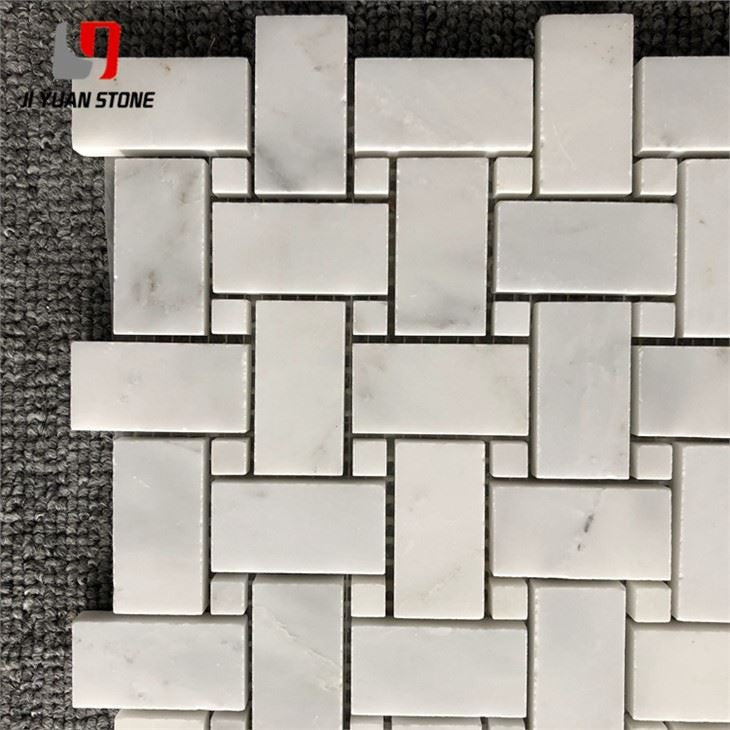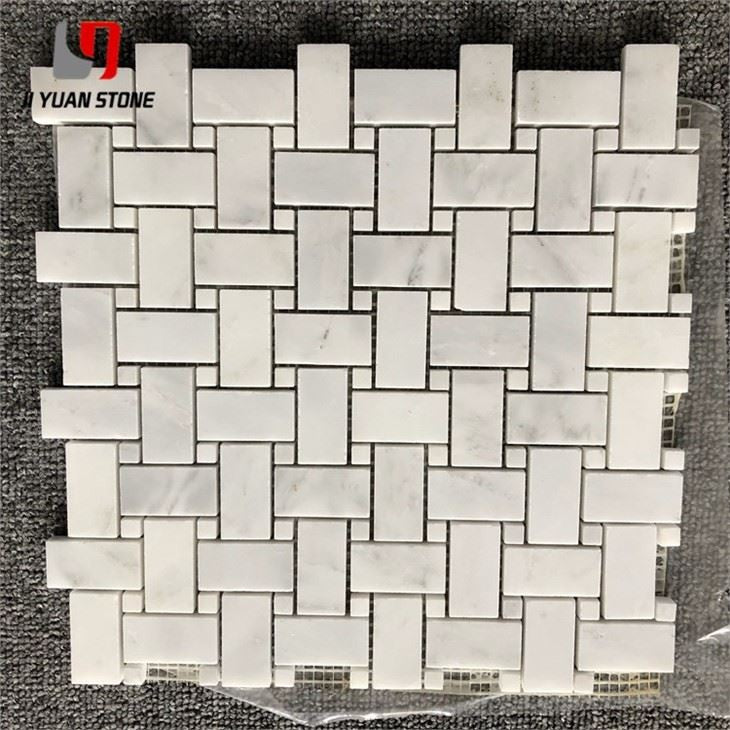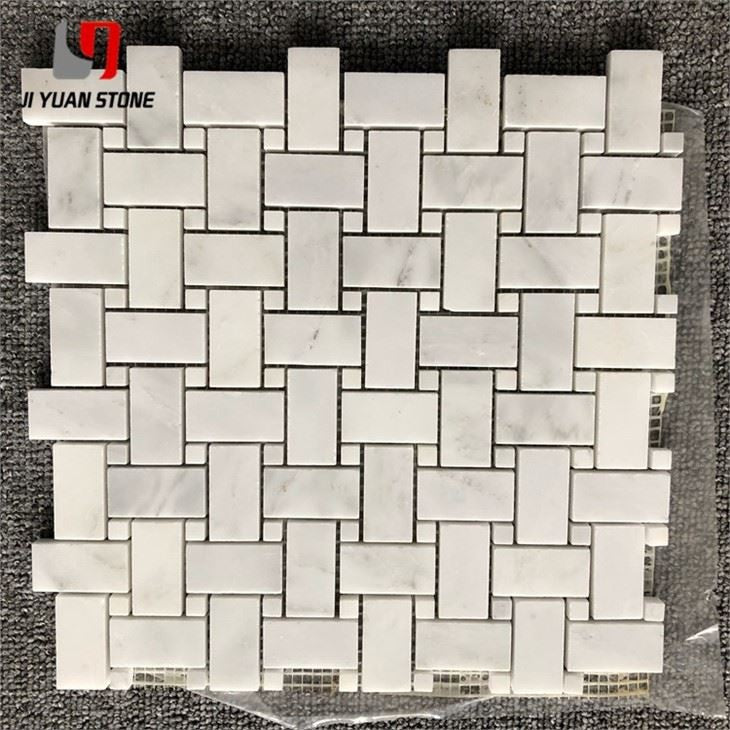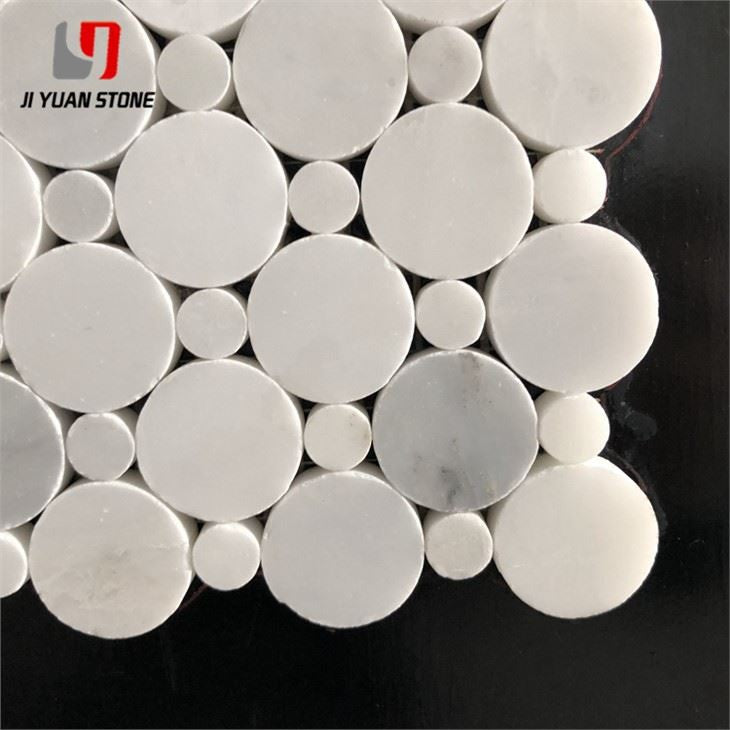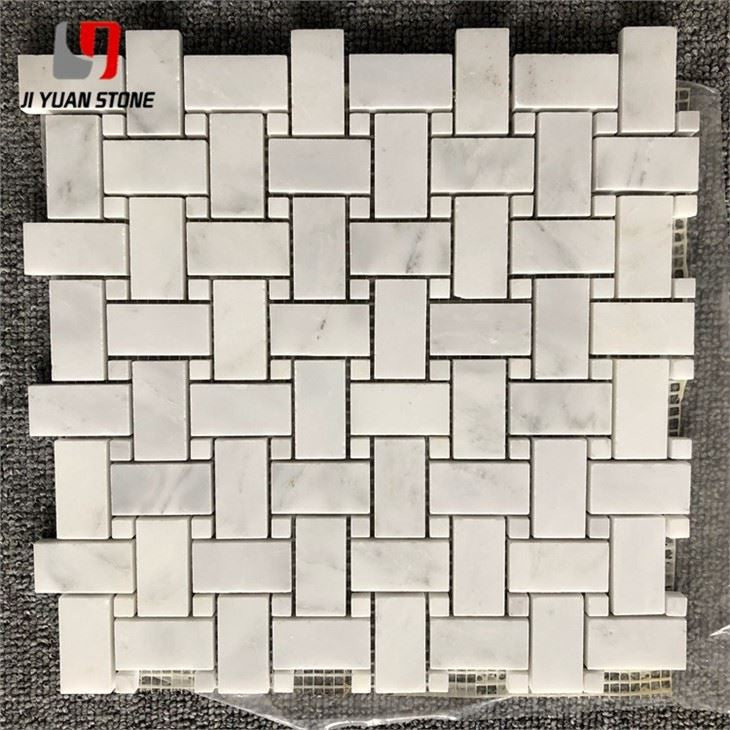Carrara tile mosaic is a high-quality natural marble that combines timeless elegance with durable construction, making it ideal for floors, walls, backsplashes, and decorative accents. Its natural texture, classic white and gray tones, and polished finish create a sophisticated and luxurious interior environment.
Causes and Prevention of Water Spots on Carrara Tile Mosaic
Causes of Water Spots
Water spots on Carrara tile mosaic are primarily caused by the cement mortar used in wet construction methods:
- Cement contains 1%–2% sodium hydroxide, which strongly absorbs water.
- In humid conditions with temperatures above 35°C, sodium carbonate solution forms, which is corrosive.
- Crystal water content fluctuates with temperature changes but never fully evaporates, causing persistent wet marks.
Methods of Prevention
1. Waterproofing Treatment
- Apply a high-quality marble mosaic protective agent on all six sides of the tile before installation.
- Pay special attention to protecting the bottom layer.
2. Modify the Installation Method
Avoid using cement for installing marble mosaics whenever possible.
If cement mortar is necessary:
- Monitor moisture content in the mix.
- Use semi-dry cement mortar instead of wet mortar.
- Apply the bottom squeegee method rather than pouring semi-dry mortar over the leveling layer.
3. Ensure Proper Ventilation
- Design and reserve water vapor channels during installation.
- Properly caulk the Carrara tile mosaic joints to prevent water penetration.
Carrara tile mosaic not only enhances interior aesthetics but also offers long-lasting durability when proper preventive measures are followed. By understanding water spot causes and implementing correct installation and waterproofing techniques, homeowners and designers can maintain the pristine beauty of this luxurious natural stone.








